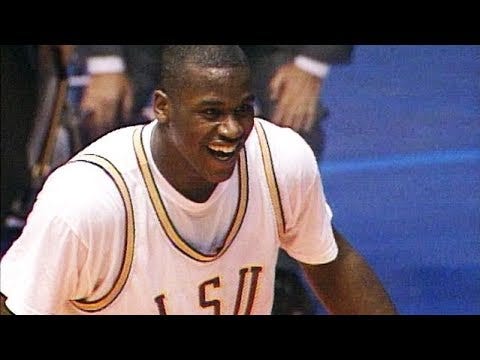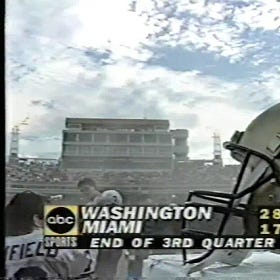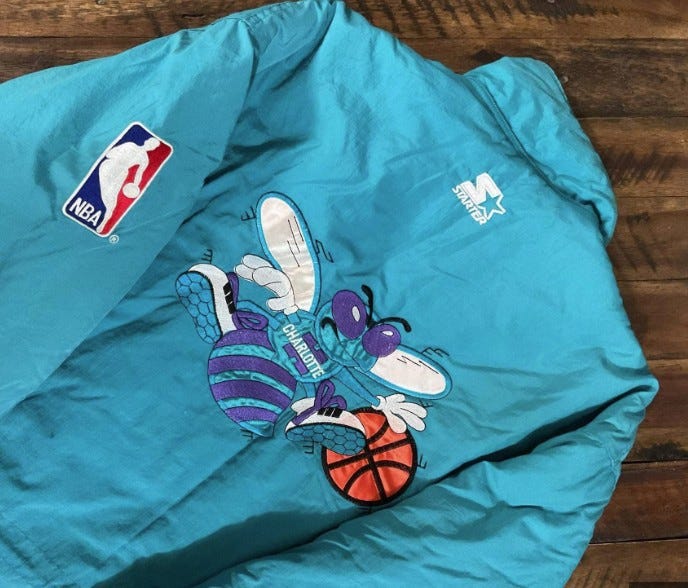Eight players have combined for nine official triple-doubles in NCAA Tournament history. The second came in 1992 when Shaquille O’Neal shot 11-of-17 from the floor en route to 26 points; grabbed 13 rebounds; and blocked 11 shots.
Put simply, Shaq was a force of nature in a 94-83 LSU win over BYU. It’s among the most individually dominant NCAA Tournament performances in my lifetime, and it headlined one of only two March Madness wins in Diesel’s career.
LSU reached the Big Dance each of Shaq’s three seasons with the Fighting Tigers. As the freshman interior complement to prolific scoring guard Mahmoud Abdul-Rauf, O’Neal averaged 13.9 points, 12 rebounds, 3.6 blocks, 1.9 assists and 1.2 steals per game for the 1989-90 squad.
LSU earned a No. 5 seed and outlasted methodical Villanova in the 1st Round, setting up a second-round showdown with Georgia Tech.
Now, when it comes to the 1990 Tournament, the headline stories are usually Loyola Marymount’s offense piling up points en route to the Elite Eight, with the Cinderella story only ending when the Lions rans into the UNLV buzz saw.
Meanwhile, UNLV is the other marquee story of that postseason, functioning as basketball’s answer to Miami football of the same era.
From The Archives: "Whammy in Miami," The Rise and Fall of Miami Hurricanes Football
The following originally appeared on Patreon in July 2020. _________ In sports, as in life, nothing lasts forever. Still, inevitable conclusions are no less shocking when that bell tolls — from Michael Jordan's walk-off jumper to cap the Bulls dynasty, to Tom Brady's pick-six thrown against Tennessee that signaled an end to his role spearheading arguably…
But Dennis Scott’s play while leading Georgia Tech to the Final Four was otherworldly. He scored 29-plus points in 4-of-5 Yellow Jackets games, made 24 3-pointers — 14 of which came in the Elite Eight and Final Four — and went off for 40 points in an instant classic Regional final with Minnesota.
If you haven’t pieced it together yet, that’s all to say Shaq and Abdul-Rauf’s LSU teams bowed out to Georgia Tech in the 2nd Round.
Scott went for 30 points and 11 rebounds, producing a double-double that outshined O’Neal’s double-double of 19 points and 14 rebounds. Shaq also blocked four shots in the loss.
In fact, Shaq had four blocks in each of his freshman-year NCAA Tournament games — and they were the two lowest totals of swats he had in his five career March Madness outings.
Shaq also put a double-double against Villanova in the 1st Round: 12 points, 11 rebounds. Eleven boards and 12 points were both the fewest of each category he produced in any NCAA Tournament appearance.
O’Neal returned to the Big Dance in 1991 with LSU as a No. 6 seed in the Midwest Region. The Tigers drew UConn, which was early into the Bill Calhoun era and still a few years away from establishing itself as a national powerhouse.
UConn reached the Elite Eight a season prior on Tate George’s iconic buzzer-beater, but the Huskies took a step back in 1991. They were 18-10 and barely squeaked into the field.
However, in holding LSU to 24-of-75 shooting from the floor, including 4-of-19 from 3-point distance, UConn cruised to a 79-62 win. Shaq accounted for almost half of the team’s made field goal with 11, shot 5-of-6 at the foul line, scored 27 points and grabbed 16 rebounds.
And no other Tiger managed more than seven points.
The Associated Press recap from March 15 is stinging:
“Because Connecticut listened to ‘coach’ O’Neal, the Shaq may never be back to terrorize college opponents.
Before Thursday night’s Midwest Regional game against Connecituc, O’Neal said that if he was Huskies coach Jim Calhoun, ‘I would put four men on Shaquille O’Neal.’ The Huskies took his advice, put Shaq on the rack until the game was out of reach, and knocked No. 22 LSU of the the NCAA Tournament, 79-62.
‘Well, they put three or four guys on me,’ said O’Neal, who missed eight of his first 13 shots and scored 14 of his 27 points after Connecticut had built a 22-point lead. ‘Every time the ball came inside they collapsed on me.’”
That’s a bit harsh. To Mike Nadel’s credit, the same article offers Dale Brown’s balancing perspective, which was that LSU shot 13-of-53 outside of Shaq. What’s more, it was Shaq’s first game back after almost a month on the sidelines due to a hairline fracture in his leg.
Had O’Neal not sustained that injury, there’s a butterfly effect at play with the future of the NBA in the decade-plus to come.
As alluded to in the AP report, speculation buzzed as to whether O’Neal would enter the 1991 NBA draft. Larry Johnson went No. 1 overall to the Charlotte Hornets that year, and teaming with rookie Alonzo Mourning in 1992-93, was star of a team that broke through to its first-ever playoff appearance.
Shaq almost assuredly would have gone No. 1 in 1991 had he decided to enter the draft.
Although O’Neal would have likely followed a similar career arc as a Hornet as he did for the Orlando Magic — bursting onto the scene with immediate force but spending his peak years in Los Angeles after free agency — it’s possible Charlotte lands in the Finals like Orlando did.
And who knows? The added appeal of the the NBA’s biggest star other than Jordan might have moved enough additional units of what was already the early ‘90s most fashionable Starter jacket to save the original Hornets from moving to New Orleans.
There are plenty of players whose NBA ceilings are dictated by which organization lands them. Shaq was not one of these players.
He would have been a star and centerpiece of a contender, for any of the 29 franchises in the league at the time.
Suggesting the Shaq of the Orlando Magic days was the “best” version of Shaq is fundamentally incorrect. He refined his back-to-basket game as a Laker in such a way that his peak from 2000-2002 ranks among the dominant stretches of any player post-ABA merger.
What’s more, Shaq altering his style upon moving to Los Angeles extended his career. He was still performing at an MVP level with the 2004-05 Heat, which he would not have been able to had he continued to play the same game he showed early in his career with the Magic.
However, the Orlando version of Shaq is the most exciting iteration of Diesel.
The Shaquille O’Neal who took the NBA by storm with stanchion-smashing dunks and the footwork of a ballet dancer appeared for LSU throughout the 1991-92 season.
His surprising decision to return to Baton Rouge for his junior campaign produced a 24.1-point, 14-rebound, 5.2-block per game season, his second straight SEC Player of the Year honor and another All-American selection.
As for LSU’s postseason prospects, the 1992 SEC Tournament may have set an ominous tone.
For insight into just how vastly different the landscape of college sports were in this era, the NCAA hammered a variety of SEC programs for infractions. I took this dive into the 1993 Iron Bowl last November, examining he peculiarity of an undefeated Auburn team being banned from TV, and basketball faced similar issues.
Kentucky was on probation from the NCAA for violations during Eddie Sutton’s tenure as head coach, but the Wildcats still participated in the SEC Tournament. A team with Jamal Mashburn and Travis Ford, that a year later went to the Final Four, ousted LSU in an 80-74 semifinal.
The Tigers put up a valiant effort against the nationally top 10-ranked Wildcats — especially considering one Shaquille O’Neal was sidelined, serving a suspension following a fight in the previous round against Tennessee.
Shaq went for 20 points and 20 rebounds the last time LSU faced Kentucky, and UK had no answer in a 74-53 blowout.
It’s fair to suggest LSU would have won a rematch had it had Shaq. It’s equally fair to suggest the Tigers would have handled a good but mismatched Alabama team in the SEC Championship, thereby bolstering their NCAA Tournament seeding and staying closer to home than Boise for the Big Dance.
Instead, a game that was the nefarious precursor to Hack-A-Shaq resulted in O’Neal’s absence.
The SEC referees were at fault, losing control with each Vols foul. And this was less Gregg Popovich having a player lightly tap Shaq to send him to the foul line, and more hockey goonery.
Dale Brown nearly attacked a Tennessee player in the resulting melee, an act that if he’d been able to carry out would have assuredly ended his career.
The fight wasn’t so consequential as to end Brown’s college career, but there’s a direct line to draw between it and the abrupt end of Shaq’s.
LSU went to the West Regional as the No. 7 seed, in the same bracket as second-seeded Indiana.
This was an exceptional Indiana team, too, with Calbert Cheaney and Alan Henderson. The Hoosiers probably should have been a No. 1 seed, but it was no matter: They won the region and advanced to the Final Four all the same.
That included winning an 89-79 Round of 32 matchup with LSU.
Shaq’s final college game was one of the very best in his career: 36 points on 12-of-18 shooting from the floor, 12 rebounds, two steals and five blocks.
Perhaps most remarkable, given the reputation he earned in the NBA, is that Shaq shot 12-of-12 from the free-throw line against Indiana.
Countless outstanding college players didn’t advance as far in the NCAA Tournament as their ability suggests they “should” have, and that’s in no way an indictment on any of them.
Despite what professional antagonists like to suggest, basketball is a team sport with 10 players on the floor at one time, all trying equally to impact the outcome. Shaq never advancing past the first weekend is no slight on O’Neal’s dominance at LSU.
LSU’s futility in the Shaq years of March Madness is, however, among the most surprising developments in the Tournament’s history.
Beginning with Kareem Abdul-Jabbar at UCLA and ending with Tim Duncan at Wake Forest, there was a remarkable three-decade era in which big men dominated the game.
Centers who shined at both levels typically flourished in the NCAA Tournament, too. Of the following 11 bigs who were stars in college and the NBA, three won national championships; most played in a Final Four; and all advanced to at least the Elite Eight after expansion.
Kareem Abdul-Jabbar, UCLA: National championships in 1967, 1968, 1969
Elvin Hayes, Houston: 1968 Final Four
Artis Gilmore, Jacksonville: 1970 Final Four
Bob Lanier, St. Bonaventure: 1970 Final Four
Bill Walton, UCLA: 1972 and 1973 national championship; 1974 Final Four
Ralph Sampson1, Virginia: 1981 Final Four
Hakeem Olajuwon, Houston: 1983 and 1984 national runner-up
Patrick Ewing, Georgetown: National championship in 1984; 1982 and 1985 national runner-up
David Robinson, Navy: 1986 Elite Eight
Alonzo Mourning, Georgetown: 1989 Elite Eight
Tim Duncan, Wake Forest: 1996 Elite Eight
Of those 11, nine were/could have been/should have been included in the NBA 75 Team. All are Hall of Famers. A case can be made that, with the exception of Kareem and maybe Hakeem, Shaq was the best player.
A day before Indiana ended his college career, Bob Knight summarized it thusly:
“He is probably the most effective center since Walton. There have been a lot of great centers, but he is the most effective guy.”
And he somehow never played in a Sweet 16 game.
I occasionally see discussion online of Ralph Sampson deeming him an NBA bust. Although as a three-time National Player of the Year at Virginia, he perhaps didn’t reach expectations held for him going into the pros, but that’s in part due to how stratospheric those expectations were. Sampson was a four-time All-Star, an All-NBA selection, an All-Star Game Most Valuable Player and Rookie of the Year — all in his first four seasons before injuries took their toll.






Still enjoying your work after all these years, brother! Hope all is well with you and yours! Need MORE pro wrestling talk, but you remain the bestest.